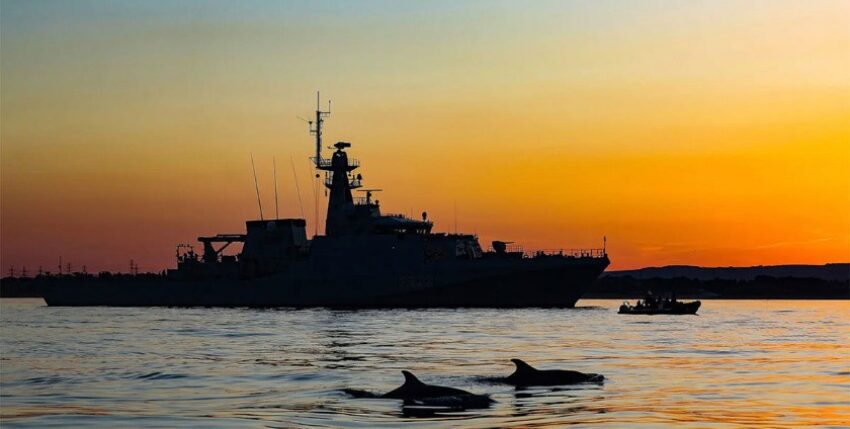Their five-year trip to East Asia, or Indo-Asia-Pacific Deployment, began nine months ago. The two OPVs, HMS Tamar and HMS Spey (Modified River class), are certainly not big ships, but with a length of 81 metres and a displacement of 1,800 tonnes, they have to "shimmy" their way through in stages. Departing from Portsmouth in September, it has so far travelled via Colombia, the Panama Canal and up the US west coast to Hawaii. In January, the Chinese South Pacific was on the programme with reconnaissance and monitoring of unauthorised maritime activities, such as the ship-to-ship transfer of North Korean-flagged vessels (UN Security Council embargo). This was followed in February by participation in the "Bersama Shield" exercise of the Five Powers Defence Arrangement (FPDA) between Singapore, Malaysia, New Zealand, Australia and the UK.
Emission Control - Environmental aspects
In addition, local support was provided for environmental investigations and scientific studies: Tamar and Spey are currently the two "greenest" units in the Royal Navy. Before their departure, they were converted to "green technology" in accordance with the latest British standards. This includes a selective catalytic reduction system in the exhaust gas flow of the propulsion diesel engines, known as the Ad-Blue process from automotive engineering. Urea is converted into ammonia and carbon dioxide in two stages; the ammonia is in turn injected into the exhaust gas flow via catalytic converters. Harmful nitrogen oxides in the exhaust gases can thus be converted into diatomic nitrogen and water. In this way, the on-board nitrogen oxide emissions can be reduced by up to 97%, which allows the units to also be allowed to drive in maritime "environmental zones" (emission control areas) with a minimal environmental footprint. With their technological equipment, they are maritime pioneers in this field - they are "IMO Tier III Compliant" (corresponds to EuroV limits for lorries). The IMO (International Maritime Organisation) has committed its members to reducing the exhaust emissions of their ships by 50% by 2050. If you really want to achieve this, you have to start now. The chemical-technical process is straightforward, but for marine diesel engines the dimension is a little more "tangible" and requires experienced technical support. Do good - and talk about it.
Five-year plan
The five-year plan tailored for the two 80-metre OPVs provides for longer stays and cooperation with Australia, Japan, the Fiji Islands and Singapore with multiple crew changes. Inconspicuous, but present!










